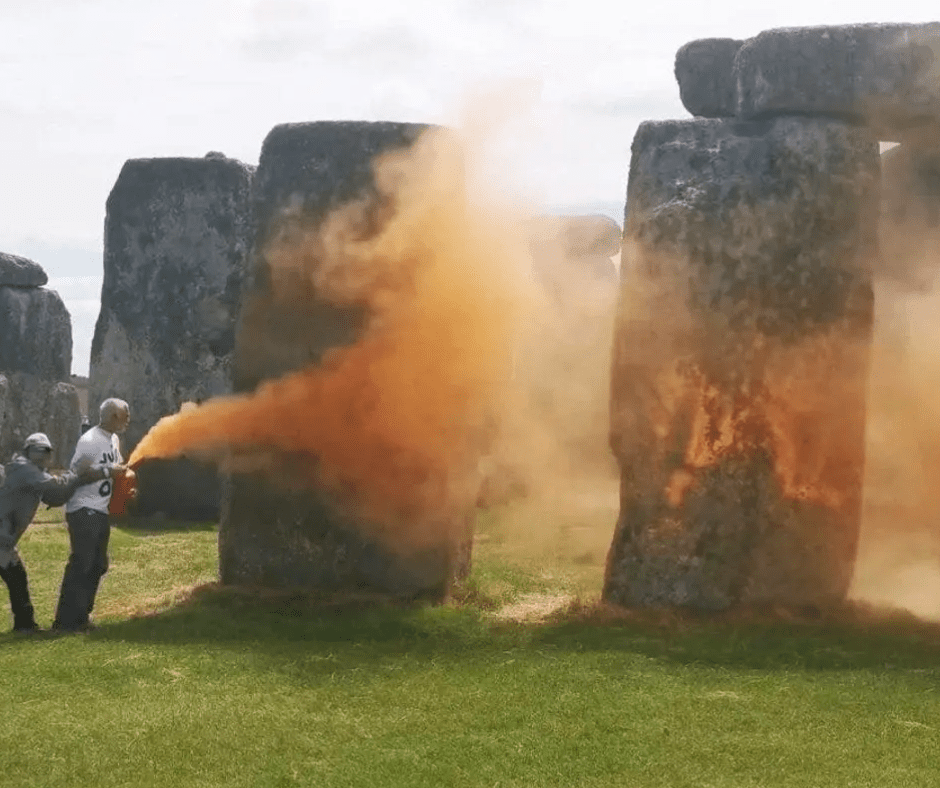
Our relationship to time and temperature makes the June Summer Solstice date a special one to note In the Northern Hemisphere. Dark, drab winter days are being replaced by more days of bright sunshine and longer daylight hours. As trees bud out and the storms of spring are behind us the entire new season of summer spreads out before us. As children, it was hard to contain our excitement that school was finished, “no more school, no more books, no more teachers’ dirty looks.” Adults are a bit excited too. They get a reprieve, however short lived, from packing school lunches and carpooling to all the scheduled events of the structured school year.
The solstice, the longest day of the year, does not always occur on the same date. Since a year is 365.25 days, the solstice varies between June 20 and June 22. To keep track of the exact time the sun reaches its highest point in the sky, the ancients constructed megalithic structures such as Stonehenge in England. As the light struck the openings in the structures it was a clear signal that the life-giving force of the sun had returned, an occasion for rituals of celebration of the new life the sun brings.
But this past week, the sun has not been a welcomed feature in Pittsburgh where I live or in many parts of the US. Heat advisories have forced us indoors, and the storms and destruction caused by downed trees and flooding, have resulted in discomfort indoors due to electrical power outages. What has been talking about and disputed for many years has arrived. The Summer Solstice seems now a reminder and an occasion to experience Ecological grief or Environmental Grief, which is an overwhelming sense of loss stemming from climate change.
As I type these words I see a top news story online: “Climate protesters spray orange powder paint on Stonehenge, demanding an end to fossil fuels in the UK.” Young people particularly experience this pain of anticipatory grief for the earth and are they are turning that pain into purpose–taking action to demand we in the western world change our ways. They are finding ways to broadcast a truth so that, in their lifetimes, the earth and the sun that serves it, may be hospitable to future human life.
I’ve had a personal connection to the Summer Solstice for 26 years since the Summer Solstice in 1997, when my son Kenneth transitioned out of this life on that solstice. It was in the early morning with the moon clearly visible high in the sky. I’ve revisited that image each year at this changing of the seasons and the sorrow of that tremendous loss has become a sweet sorrow, a reminder of the gift Ken’s life was to me, and still is.
Atlanta has been a place where I have celebrated Ken’s life and this notion of the grief spiral of the seasons and how they help us turn pain into purpose. My purpose became writing and using the arts to transform grief. Next week I will return to Atlanta again to launch and perform my new book, The Art of Grieving: How Art and Artmaking Help Us Grieve and Live Our Best Lives. Members of the InterPlay improv troupe the SoulPrint Players will accompany again as they did in 2017 when I honored the 20th anniversary of my son Kenneth’s death from AIDS, with a program, When Partings Becomes Sweet Sorrow. Here are the details of the upcoming Art of Grieving book launch and performance –
Date: Tuesday June 25th 7 – 8:30 pm
Place: The Mask Center, located in the Little Five Points Community Center, 1083 Austin Ave. NE, Atlanta GA 30307
Fee: No cost for admittance. Books to be signed by the author will be available for purchase.
To Register: https://events.humanitix.com/the-art-of-grieving-book-launch-performance
If you’re within driving distance I hope you will come, bring friends, and help us spread the word.
Sheila

